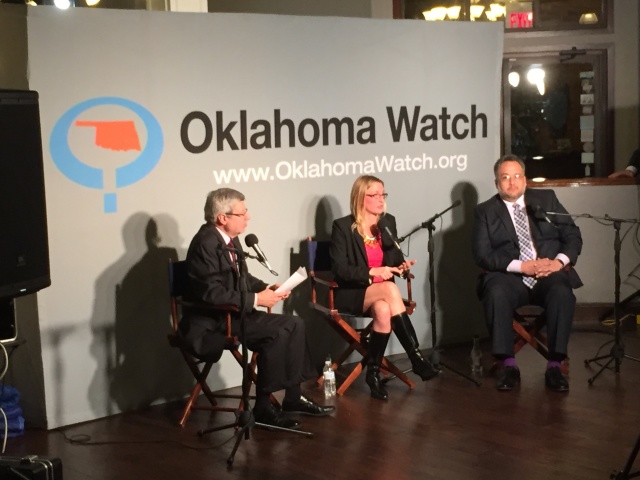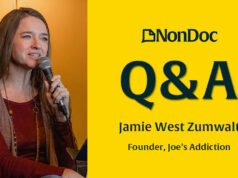

Over the past week, I have been overwhelmed by discovering the condition of Oklahoma’s mental health care system. I only investigated one aspect of it, and I was depressed enough just by that.
I am a huge advocate of people seeking counseling, and, especially, making stigma-free counseling readily available for children.
Earlier this week, I submitted a commentary to NonDoc in hopes of it being published before today when the Oklahoma Healthcare Authority board of directors was scheduled to vote on an emergency policy proposed by the Oklahoma Department of Mental Health and Substance Abuse Services (ODMHSAS). I was relieved to receive word late Monday that the urgency of the situation had somewhat dissipated. That vote has been pushed back to April, but sadly, the same fate I was fearful of before could still occur, just at a later date.
The policy in question would no longer allow mental health patients covered by SoonerCare to seek treatment from independent providers.
It’s a complicated situation that stems from Oklahoma’s revenue failure and massive budget shortfall, but I’m attempting to break down all the things I learned this past week into layman’s terms.
Budget cuts have effects
Various budget cuts are being implemented statewide. Funds for mental health care are being reduced by almost $9.8 million dollars, as of now. Many expect additional cuts to happen in the future.
ODMHSAS has already absorbed $4.4 million dollars in budget cuts internally. In 2010, a rule change allowed SoonerCare to cover children seeing licensed behavioral health professionals in independent practices (adults covered by SoonerCare are still mandated to agencies only). Two main reasons for the widening of children’s coverage were: to allow those in rural areas to have mental health access options closer to them (agencies are mostly located in urban areas) and to increase access to specialized services.
The new proposal this year from ODMHSAS would reverse these advances in hopes of cutting costs by an additional $1.2 million.
Imagine a 10-year-old kid who has been abused, has trust and abandonment issues, but has been seeing a counselor from a private practice and made some great strides. That child would now have to discontinue therapy with the counselor he or she has come to know and trust. The child would have to begin seeing a new counselor with an agency.
In that scenario, of course, the kid is lucky enough to live close to an agency. If children live a couple hours away from one, it is likely their treatment will end all together unless they are able to pay out of pocket (which is highly improbable for most families being affected). For anyone with children in need of professional help, I would think choosing a counselor would be an important process. You would want to find someone that made your child feel comfortable, and maybe even specialized in something specific your child was dealing with. This could be difficult to find in an agency as patients are assigned counselors, and there are not as many who specialize in specific issues. If you did not find a good fit for your child in an agency, I would think the chance to look at independent providers would be very beneficial.
Other options to preserve mental health access
There are other viable options that would save great amounts of money that ODMHSAS seems not to be considering at this time. For instance, agencies are allowed up to an hour and a half per day with individual patients and two hours with families. Independent providers are capped at one hour for both. If agencies were made to stick to one hour with individuals and an hour and a half with families, the state would save money. As someone who has just absorbed all this information in the past week, I cannot comprehend why this would not be a more favorable option. If the state is going to cut off services completely for thousands of children rather than shave 30 minutes off of treatment for those receiving care at agencies, I think we are making a mistake.
One point made by ODMHSAS in proposing this rule is that agencies see patients with the most severe needs. A patient’s severity is rated on a numbered scale. Someone who receives a three or four is classified as severely emotionally disturbed (SED). If a patient is marked SED, the agency receives more funds for that patient. Independent practices do not receive any extra funding for seeing SED patients. At a meeting in January where several people expressed their concerns, many statements were made claiming agency employees are often pressured to mark patients as SED. If this truly is a common practice, it causes the data claiming agencies see more severe cases to be questionable.
After reviewing data, it seems to me that the only way the proposed rule change saves Oklahoma money is if thousands of children stop having mental health access. If all these patients move from independent providers to agencies, it would likely cost the state even more money because reimbursements are often higher to agencies. I hope this concept hits anyone reading this as hard as it hit me.
‘ODMHSAS is in a tough spot’
The good news is that the vote has now been moved to April 1, giving stakeholders and the public more time to discuss this out in the open. The bad news is that if the board ultimately votes in favor of the change, the rule goes directly to Gov. Mary Fallin. If she approves it, it will become the new official policy, and thousands of children will stop receiving the mental health care they need.
I want to acknowledge that ODMHSAS is in a tough spot, and I believe the people behind the decision are doing what they feel is best. My hope is they will consider other potentially less-damaging options. My even bigger hope is that our legislators will make mental health access a priority and do whatever possible to ensure it gets adequate funding in the future. Yes, for the sake of the children, we might have to consider tax increases.
I must acknowledge three mental health professionals I spoke to while writing this commentary. Kris Bryant, Cindy Lee, and my own sister-in-law, Heather Askew, were all a great help to me.
I also want to acknowledge Josh Kingcade, a father of three foster children who have received help from independent providers under SoonerCare. He spoke passionately with me about how these services have helped his family immensely. He also expressed how this change will be difficult specifically for about 800 foster children who often struggle with trust issues, abandonment, questioning their own worthiness and other mental-health-related challenges. I am grateful to all four of these people for their help and for their hearts, and I am grateful to everyone working to support mental health access in Oklahoma.
Regardless of the outcome, there will still be thousands of kids in Oklahoma who need help, and we haven’t even begun to talk about adults who need help with mental health issues. My hope is that we all start taking active steps to ensure they get it.
(Correction: This piece has been updated to correctly name the Oklahoma Department of Mental Health and Substance Abuse Services.)
(Disclosure: NonDoc editor in chief William W. Savage III is a nationally certified Mental Health First Aid instructor who occasionally contracts with ODMHSAS to provide trainings to school staff in Oklahoma. The course focuses on decreasing the stigma of mental health issues and preparing people to provide appropriate and effective assistance for someone experiencing or developing a mental health crisis.)




















